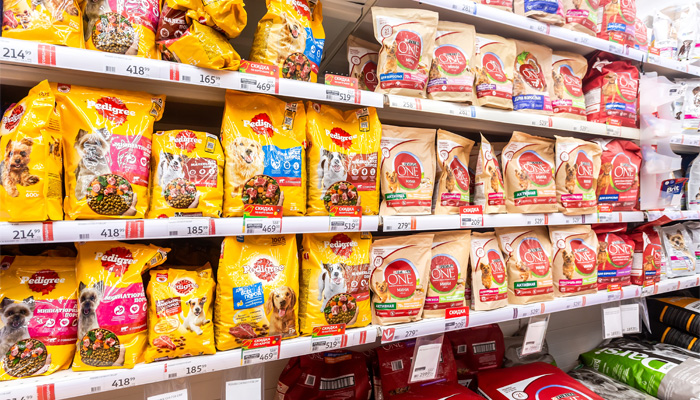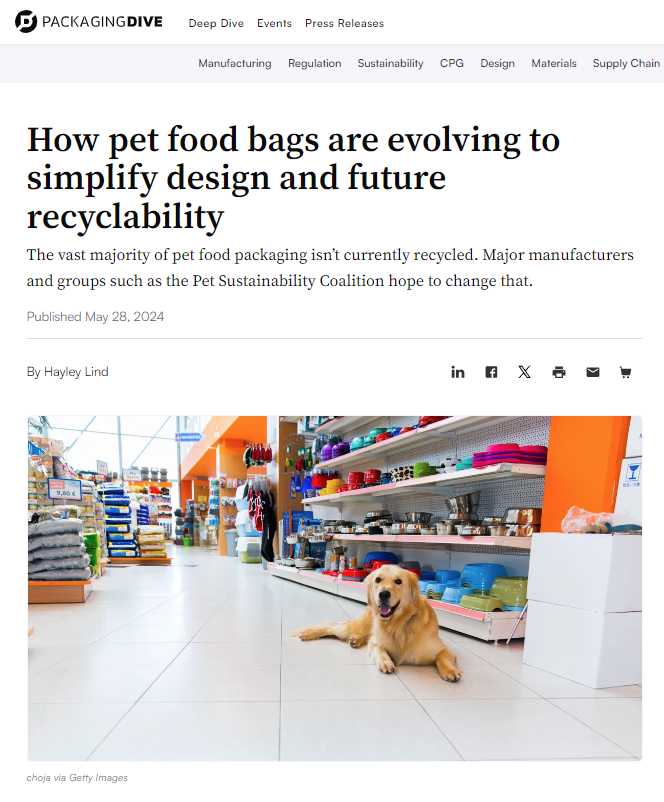
The pet food industry, traditionally associated with bulky, multimaterial bags that pose recycling challenges, is now re-evaluating its approach to flexible packaging. Brands are increasingly prioritizing monomaterial designs, lighter weights, and recyclability.
Consumers spend billions annually on pet food, generating approximately 300 million pounds of plastic pet food and treat bags in the United States, as per industry research. Most of this material currently ends up in landfills. However, with sustainability-conscious generations investing more in pet ownership, there is a rising demand for more eco-friendly packaging solutions.
A typical kibble bag is crafted from a robust, tear-resistant material with a metallized paper or plastic lining to maintain freshness and prevent grease leakage. These bags often have a glossy exterior. The blend of paper and plastic materials makes them challenging to recycle. In response, packaging companies are now developing bags made from polyethylene and ethylene vinyl alcohol (EVOH) and seeking additional ways to simplify their designs for better recyclability.
In a new article on Packaging Dive, Troy Snader, Senior Vice President of Business Development for Secondary Packaging at ProMach, offers his expertise on the state of packaging recyclability materials in the pet food industry. He explains that all of the changes in this industry with materials and bag sizes are driven by concerns that the new designs may not preserve dry food as effectively as their multilayer predecessors, due to differences in barrier properties.
ProMach product brand Matrix, a leader in vertical form, fill, and seal machines, pre-made pouch packaging for the pet care industry has introduced new features, such as pinch rollers, to accommodate new materials. Sealing PE pet food packaging can be more expensive due to the more precise temperature control required compared to other materials.


